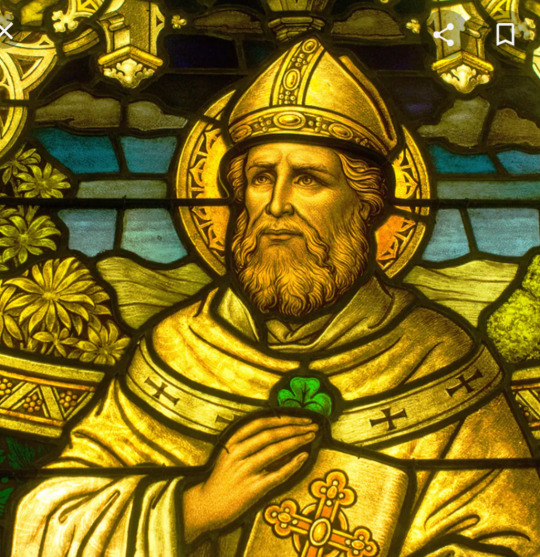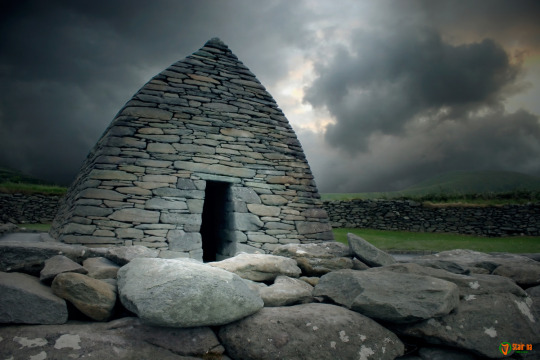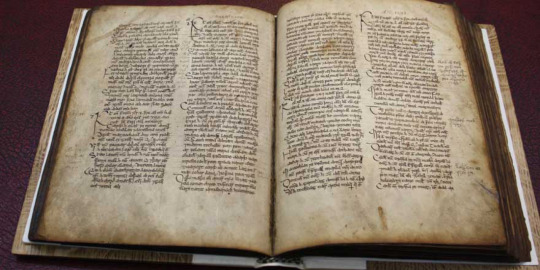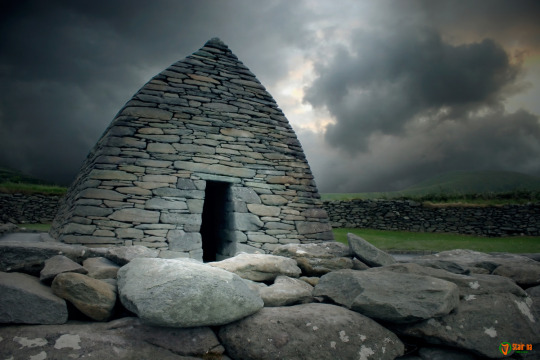#D.A. Binchy
Text
Ancient Irish Law
‘Irish law is the oldest, most original, and most extensive of mediaeval European legal systems. It is a unique legal inheritance, an independent indigenous system of advanced jurisprudence that was fully evolved by the eighth century. It is also far less well-known than it deserves.’
‘Early medieval Ireland evolved a system of law (often called ’Brehon’ law, from the Old Irish word brithemain…

View On WordPress
#Ancient Irish Law#Annals of Connacht#Brehon Law#CELT#Corpus of Electronic Texts#D.A. Binchy#Dublin#Former Director#Galway#Irish Law#Maeve Binchy#National University of Ireland#Professor Donnchadh Ó Corráin#RIIP#Royal Irish Academy#Trinity College
11 notes
·
View notes
Text

The Muirdris and Fergus mac Léti by unknown artist
"The next day Fergus put on the shoes of Iubdan and went forth to Loch Rury, and with him went the lords of Ulster. And when he reached the margin of the lake he drew his sword and went down into it, and soon the waters covered him.
After a while those that watched upon the bank saw a bubbling and a mighty commotion in the waters, now here, now there, and waves of bloody froth broke at their feet. At last, as they strained their eyes upon the tossing water, they saw Fergus rise to his middle from it, pale and bloody. In his right hand he waved aloft his sword, his left was twisted in the coarse hair of the monster's head, and they saw that his countenance was fair and kingly as of old. "Ulstermen, I have conquered," he cried; and as he did so he sank down again, dead with his dead foe, into their red grave in Loch Rury.
And the Ulster lords went back to Emania, sorrowful yet proud, for they knew that a seed of honour had been sown that day in their land from which should spring a breed of high-hearted fighting men for many a generation to come.
Of this was sung:
King Fergus, son of Léte
Went on the sandbank of Rudraige;
A horror which appeared to him — fierce was the conflict —
Was the cause of his disfigurement."
-The Saga of Fergus mac Léti by D.A. Binchy
&
The High Deeds of Finn and Other Bardic Romances of Ancient Ireland by T.W. Rolleston
https://paganimagevault.blogspot.com/2022/03/the-muirdris-and-fergus-mac-leti-by.html
#fergus mac leti#pagan#paganism#literature#ireland#ulster#celtic#celts#celtic mythology#history#Muirdris
30 notes
·
View notes
Text
Today's breif blog is on St. Patrick
🍀🍀🍀🍀🍀🍀🍀🍀🍀🍀🍀🍀🍀🍀🍀🍀🍀
St. Patrick, (flourished 5th century, Britain and Ireland; feast day March 17), patron saint and national apostle of Ireland, credited with bringing Christianity to Ireland and probably responsible in part for the Christianization of the Picts and Anglo-Saxons. He is known only from two short works, the Confessio, a spiritual autobiography, and his Letter to Coroticus, a denunciation of British mistreatment of Irish Christians.
DID YOU KNOW?
Patrick is known to have incorporated preexisting Irish beliefs and symbols into his teachings about Christianity.
Shamrocks are associated with Patrick because he may have used shamrocks to explain the Christian Trinity.
Patrick may have brought the Latin alphabet to Ireland.
Legend says that Patrick cast out all the snakes in Ireland, though many scientists hold that snakes have never existed in Ireland.
Life
Patrick was born in Britain of a Romanized family. At age 16 he was torn by Irish raiders from the villa of his father, Calpurnius, a deacon and minor local official, and carried into slavery in Ireland. He spent six bleak years there as a herdsman, during which he turned with fervour to his faith. Upon dreaming that the ship in which he was to escape was ready, he fled his master and found passage to Britain. There he came near to starvation and suffered a second brief captivity before he was reunited with his family. Thereafter, he may have paid a short visit to the Continent.
The best known passage in the Confessio tells of a dream, after his return to Britain, in which one Victoricus delivered him a letter headed “The Voice of the Irish.” As he read it, he seemed to hear a certain company of Irish beseeching him to walk once more among them. “Deeply moved,” he says, “I could read no more.” Nevertheless, because of the shortcomings of his education, he was reluctant for a long time to respond to the call. Even on the eve of reembarkation for Ireland he was beset by doubts of his fitness for the task. Once in the field, however, his hesitations vanished. Utterly confident in the Lord, he journeyed far and wide, baptizing and confirming with untiring zeal. In diplomatic fashion he brought gifts to a kinglet here and a lawgiver there but accepted none from any. On at least one occasion, he was cast into chains. On another, he addressed with lyrical pathos a last farewell to his converts who had been slain or kidnapped by the soldiers of Coroticus.
Careful to deal fairly with the non-Christian Irish, he nevertheless lived in constant danger of martyrdom. The evocation of such incidents of what he called his “laborious episcopate” was his reply to a charge, to his great grief endorsed by his ecclesiastical superiors in Britain, that he had originally sought office for the sake of office. In point of fact, he was a most humble-minded man, pouring forth a continuous paean of thanks to his Maker for having chosen him as the instrument whereby multitudes who had worshipped “idols and unclean things” had become “the people of God.”
The phenomenal success of Patrick’s mission is not, however, the full measure of his personality. Since his writings have come to be better understood, it is increasingly recognized that, despite their occasional incoherence, they mirror a truth and a simplicity of the rarest quality. Not since St. Augustine of Hippo had any religious diarist bared his inmost soul as Patrick did in his writings. As D.A. Binchy, the most austerely critical of Patrician (i.e., of Patrick) scholars, put it, “The moral and spiritual greatness of the man shines through every stumbling sentence of his ‘rustic’ Latin.”
It is not possible to say with any assurance when Patrick was born. There are, however, a number of pointers to his missionary career having lain within the second half of the 5th century. In the Coroticus letter, his mention of the Franks as still “heathen” indicates that the letter must have been written between 451, the date generally accepted as that of the Franks’ irruption into Gaul as far as the Somme River, and 496, when they were baptized en masse. Patrick, who speaks of himself as having evangelized heathen Ireland, is not to be confused with Palladius, sent by Pope Celestine I in 431 as “first bishop to the Irish believers in Christ.”
Toward the end of his life, he retired to Saul, where he may have written his Confessio. It is said that an angel conveyed to him that he was to die at Saul, the site of his first church, despite his wishes to die within the ecclesiastical metropolis of Ireland. His last rites were administered by St. Tussach (also spelled Tassach or Tassac).
Legends
Before the end of the 7th century, Patrick had become a legendary figure, and the legends have continued to grow. One of these would have it that he drove the snakes of Ireland into the sea to their destruction. Patrick himself wrote that he raised people from the dead, and a 12th-century hagiography places this number at 33 men, some of whom are said to have been deceased for many years. He also reportedly prayed for the provision of food for hungry sailors traveling by land through a desolate area, and a herd of swine miraculously appeared.
Another legend, probably the most popular, is that of the shamrock, which has him explain the concept of the Holy Trinity, three persons in one God, to an unbeliever by showing him the three-leaved plant with one stalk. Traditionally, Irishmen have worn shamrocks, the national flower of Ireland, in their lapels on St. Patrick’s Day, March 17.
I hope you enjoyed this breif blog on Saint Patrick
Regards,
Culture Calypso's Blog 🍀🍀🍀





12 notes
·
View notes
Text

(image id: a wikipedia screenshot reading “work of D.A. Binchy”. end id)
da binki? (x)
3 notes
·
View notes
Text
Uraicecht Becc | Old Irish for 'Small Primer'
Uraicecht Becc | Old Irish for ‘Small Primer’
Uraicecht Becc is an Old Irish legal tract on status. Of all status tracts, it has the greatest breadth in coverage, including not only commoners, kings, churchmen and poets, but also a variety of other professional groups, including judges. However, it does not go into as much detail for each group and level as do other status tracts.
The Small Primer goes into detail regarding the poets’ place…

View On WordPress
#Brehon Law#Co. Kerry#Cork#Corpus Iuris Hibernici#D.A. Binchy#Emly#Ireland#Irish History#Munster#Stair na hÉireann#The Gallarus Oratory#Uraicecht Becc – Old Irish for &039;Small Primer&039;
8 notes
·
View notes
Text
Ancient Irish Law
‘Irish law is the oldest, most original, and most extensive of mediaeval European legal systems. It is a unique legal inheritance, an independent indigenous system of advanced jurisprudence that was fully evolved by the eighth century. It is also far less well-known than it deserves.’
‘Early medieval Ireland evolved a system of law (often called ’Brehon’ law, from the Old Irish word brithemain…

View On WordPress
#Ancient Irish Law#Annals of Connacht#Brehon Law#CELT#Corpus of Electronic Texts#D.A. Binchy#Dublin#Former Director#Galway#Irish Law#Maeve Binchy#National University of Ireland#Professor Donnchadh Ó Corráin#RIIP#Royal Irish Academy#Trinity College
45 notes
·
View notes
Text
Ancient Irish Law
‘Irish law is the oldest, most original, and most extensive of mediaeval European legal systems. It is a unique legal inheritance, an independent indigenous system of advanced jurisprudence that was fully evolved by the eighth century. It is also far less well-known than it deserves.’
‘Early medieval Ireland evolved a system of law (often called ’Brehon’ law, from the Old Irish word brithemain…

View On WordPress
#Ancient Irish Law#Annals of Connacht#Brehon Law#CELT#Corpus of Electronic Texts#D.A. Binchy#Dublin#Former Director#Galway#Irish Law#Maeve Binchy#National University of Ireland#Professor Donnchadh Ó Corráin#RIIP#Royal Irish Academy#Trinity College
24 notes
·
View notes
Text
Uraicecht Becc | Old Irish for 'Small Primer'
Uraicecht Becc | Old Irish for ‘Small Primer’
Uraicecht Becc is an Old Irish legal tract on status. Of all status tracts, it has the greatest breadth in coverage, including not only commoners, kings, churchmen and poets, but also a variety of other professional groups, including judges. However, it does not go into as much detail for each group and level as do other status tracts.
The Small Primer goes into detail regarding the poets’ place…

View On WordPress
#Brehon Law#Co. Kerry#Cork#Corpus Iuris Hibernici#D.A. Binchy#Emly#Ireland#Irish History#Munster#Stair na hÉireann#The Gallarus Oratory#Uraicecht Becc – Old Irish for &039;Small Primer&039;
5 notes
·
View notes
Text
Ancient Irish Law
‘Irish law is the oldest, most original, and most extensive of mediaeval European legal systems. It is a unique legal inheritance, an independent indigenous system of advanced jurisprudence that was fully evolved by the eighth century. It is also far less well-known than it deserves.’
‘Early medieval Ireland evolved a system of law (often called ’Brehon’ law, from the Old Irish word brithemain…
View On WordPress
#Ancient Irish Law#Annals of Connacht#Brehon Law#CELT#Corpus of Electronic Texts#D.A. Binchy#Dublin#Former Director#Galway#Irish Law#Maeve Binchy#National University of Ireland#Professor Donnchadh Ó Corráin#RIIP#Royal Irish Academy#Trinity College
30 notes
·
View notes
Text
Uraicecht Becc | Old Irish for 'Small Primer'
Uraicecht Becc | Old Irish for ‘Small Primer’
Uraicecht Becc is an Old Irish legal tract on status. Of all status tracts, it has the greatest breadth in coverage, including not only commoners, kings, churchmen and poets, but also a variety of other professional groups, including judges. However, it does not go into as much detail for each group and level as do other status tracts.
The Small Primer goes into detail regarding the poets’ place…
View On WordPress
#Brehon Law#Co. Kerry#Cork#Corpus Iuris Hibernici#D.A. Binchy#Emly#Ireland#Irish History#Munster#Stair na hÉireann#The Gallarus Oratory#Uraicecht Becc – Old Irish for &039;Small Primer&039;
7 notes
·
View notes
Text
Uraicecht Becc – Old Irish for 'Small Primer'
Uraicecht Becc – Old Irish for ‘Small Primer’

Uraicecht Becc is an Old Irish legal tract on status. Of all status tracts, it has the greatest breadth in coverage, including not only commoners, kings, churchmen and poets, but also a variety of other professional groups, including judges. However, it does not go into as much detail for each group and level as do other status tracts.
The Small Primer goes into detail regarding the poets’ place…
View On WordPress
#Brehon Law#Co. Kerry#Cork#Corpus Iuris Hibernici#D.A. Binchy#Emly#Ireland#Irish History#Munster#Stair na hÉireann#The Gallarus Oratory#Uraicecht Becc – Old Irish for &039;Small Primer&039;
7 notes
·
View notes
Text
Ancient Irish Law
‘Irish law is the oldest, most original, and most extensive of mediaeval European legal systems. It is a unique legal inheritance, an independent indigenous system of advanced jurisprudence that was fully evolved by the eighth century. It is also far less well-known than it deserves.’
‘Early medieval Ireland evolved a system of law (often called ’Brehon’ law, from the Old Irish word brithemain…
View On WordPress
#Ancient Irish Law#Annals of Connacht#Brehon Law#CELT#Corpus of Electronic Texts#D.A. Binchy#Dublin#Former Director#Galway#Irish Law#Maeve Binchy#National University of Ireland#Professor Donnchadh Ó Corráin#RIIP#Royal Irish Academy#Trinity College
11 notes
·
View notes
Text
Uraicecht Becc – Old Irish for 'Small Primer'
Uraicecht Becc – Old Irish for ‘Small Primer’
Uraicecht Becc is an Old Irish legal tract on status. Of all status tracts, it has the greatest breadth in coverage, including not only commoners, kings, churchmen and poets, but also a variety of other professional groups, including judges. However, it does not go into as much detail for each group and level as do other status tracts.
The Small Primer goes into detail regarding the poets’ place…
View On WordPress
#Brehon Law#Co. Kerry#Cork#Corpus Iuris Hibernici#D.A. Binchy#Emly#Ireland#Irish History#Munster#Stair na hÉireann#The Gallarus Oratory#Uraicecht Becc – Old Irish for &039;Small Primer&039;
3 notes
·
View notes
Text
Ancient Irish Law
‘Irish law is the oldest, most original, and most extensive of mediaeval European legal systems. It is a unique legal inheritance, an independent indigenous system of advanced jurisprudence that was fully evolved by the eighth century. It is also far less well-known than it deserves.’ ‘Early medieval Ireland evolved a system of law (often called ’Brehon’ law, from the Old Irish word brithemain…
View On WordPress
#Ancient Irish Law#Annals of Connacht#Brehon Law#CELT#Corpus of Electronic Texts#D.A. Binchy#Dublin#Former Director#Galway#Irish Law#Maeve Binchy#National University of Ireland#Professor Donnchadh Ó Corráin#RIIP#Royal Irish Academy#Trinity College
39 notes
·
View notes
Text
Uraicecht Becc – Old Irish for 'Small Primer'
Uraicecht Becc – Old Irish for ‘Small Primer’
Uraicecht Becc is an Old Irish legal tract on status. Of all status tracts, it has the greatest breadth in coverage, including not only commoners, kings, churchmen and poets, but also a variety of other professional groups, including judges. However, it does not go into as much detail for each group and level as do other status tracts. The Small Primer goes into detail regarding the poets’ place…
View On WordPress
#Brehon Law#Co. Kerry#Cork#Corpus Iuris Hibernici#D.A. Binchy#Emly#Ireland#Irish History#Munster#Stair na hÉireann#The Gallarus Oratory#Uraicecht Becc – Old Irish for &039;Small Primer&039;
2 notes
·
View notes